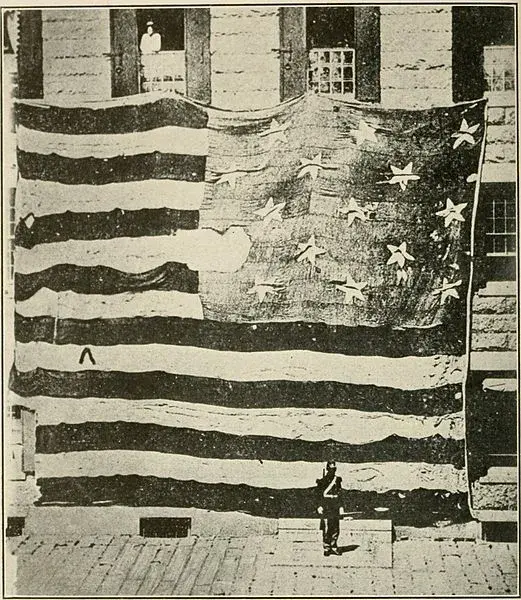The Star Spangled Banner
- Sara Verheul
- Sep 14
- 3 min read
Excerpt from Military History News, “Star Spangled Banners - America’s Most Storied Wartime Flags”, published July 1, 2016


To say that a lot has been written about the original Star Spangled Banner is a monumental understatement. The famous 30 x 42-foot flag flew over Baltimore’s Fort McHenry throughout the 25-hour British bombardment of Sept. 13, 1814. The Royal Navy anchored 19 ships off the mouth of the harbour and hoped to use the vessels’ guns to reduce the fortress to rubble. Once McHenry was silenced, the invaders planned to put 5,000 redcoats ashore to seize the city. Not only did the fort withstand the barrage, the sight of the flag throughout the night signalled to Baltimore’s beleaguered defenders that the battery was still in American hands. Eventually the British gave up their attack and withdrew.
The battered 1,260-square-foot banner, which was illuminated in the darkness by exploding British shells and Congreve rockets, inspired one local eyewitness to compose a poem about the spectacle. Francis Scott Key’s “The Defense of Fort M’Henry” <sic> was published in a local paper the following week. The 35-year-old Baltimore lawyer would later set his verse to the tune of a bawdy British drinking song “To Anacreon In Heaven” — he called it “The Star Spangled Banner”. In 1931, a resolution by Congress (signed into law by President Herbert Hoover) would make the patriotic ballad the official national anthem of the United States.

Ironically, Key observed the scene that inspired his ode while standing on the deck of an enemy vessel – HMS Tonnant, an 80-gun British ship of the line. The barrister was part of a delegation of local residents who were aboard to negotiate the release of some militiamen captured in an earlier engagement. Once the battle had commenced, enemy commanders temporarily detained the party and Key was forced to witness the conflagration from the water.
The massive pennant was the largest American standard in existence at the time. Fort McHenry’s commander, Major George Armistead, ordered it made a year before as part of the preparations for an expected British assault.
A 38-year-old Philadelphia widow named Mary Young Pickersgill sewed the cotton and English wool flag in about six weeks with help from her daughter and a half-dozen seamstresses, including two slaves. The U.S. government paid her $405 dollars for it.

The banner featured the now familiar alternating red and white horizontal stripes and 15 stars on blue – one for each of the 13 original American states plus two more for Vermont and Kentucky, which joined the U.S. in 1791 and 1792 respectively. Following the battle, Armistead claimed the banner as a personal souvenir. The Virginia native would later cut an eight-foot wide segment off the end of the flag, swatches of which he presented to friends as gifts. The uncle of the future Confederate general Lewis “Lo” Armistead even sliced away one of the original stars. As recently as 2011, one of these fragments was auctioned off in Dallas, Texas for nearly $40,000.
What remained of the famous banner was donated to the Smithsonian Institute in 1912. Two years later, the museum paid a Boston embroiderer named Amelia Fowler $1,200 to repair the much-deteriorated fabric. Multiple restorations followed throughout the 20thCentury, including a massive $18-million-dollar, multi-stage effort, which began in 1999.
The flag, which is now too flimsy to be hung up vertically, is on permanent display at the National Museum of American History in Washington D.C. It’s exhibited in a 10 deg. angled case in a special climate and humidity-controlled low-light viewing room.



Comments